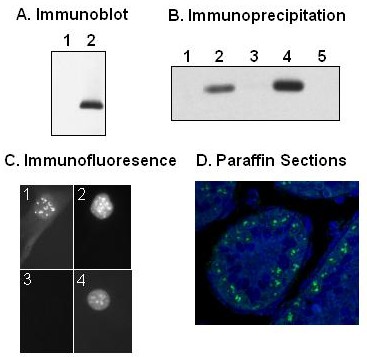CB1012 Sigma-AldrichAnti-p19ARF (54-75) Rat mAb (5-C3-1)
This Anti-p19ARF (54-75) Rat mAb (5-C3-1) is validated for use in Immunoblotting, IF, IP, Paraffin Sections for the detection of p19ARF (54-75).
More>> This Anti-p19ARF (54-75) Rat mAb (5-C3-1) is validated for use in Immunoblotting, IF, IP, Paraffin Sections for the detection of p19ARF (54-75). Less<<Recommended Products
Overview
| Replacement Information |
|---|
Key Spec Table
| Host |
|---|
| R |
| Product Information | |
|---|---|
| Form | Liquid |
| Formulation | In PBS. |
| Positive control | Mouse embryonic fibroblasts (MEF) |
| Preservative | ≤0.1% sodium azide |
| Physicochemical Information |
|---|
| Dimensions |
|---|
| Materials Information |
|---|
| Toxicological Information |
|---|
| Safety Information according to GHS |
|---|
| Safety Information |
|---|
| Product Usage Statements |
|---|
| Packaging Information |
|---|
| Transport Information |
|---|
| Supplemental Information |
|---|
| Specifications |
|---|
| Global Trade Item Number | |
|---|---|
| Catalogue Number | GTIN |
| CB1012 | 0 |
Documentation
Anti-p19ARF (54-75) Rat mAb (5-C3-1) SDS
| Title |
|---|
Anti-p19ARF (54-75) Rat mAb (5-C3-1) Certificates of Analysis
| Title | Lot Number |
|---|---|
| CB1012 |
References
| Reference overview |
|---|
| De Stanchina, E., et al. 1998. Genes Dev. 12, 2434. Larsen, C.J., 1998. Bull. Cancer 85, 304. Radfar, A., et al. 1998. Proc. Natl. Acad. Sci. USA 95, 13194. Zindy, F., et al. 1998. Genes Dev. 12, 2424. |








